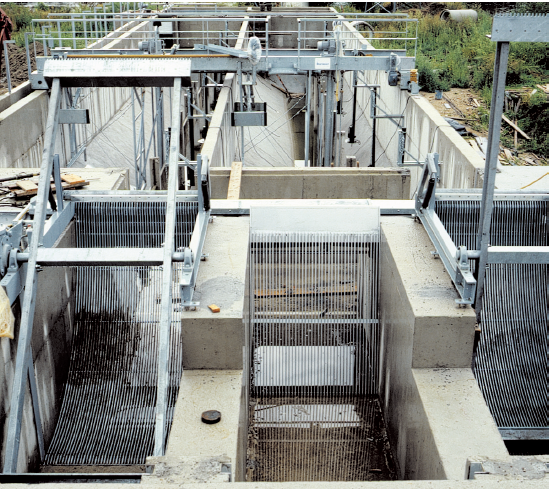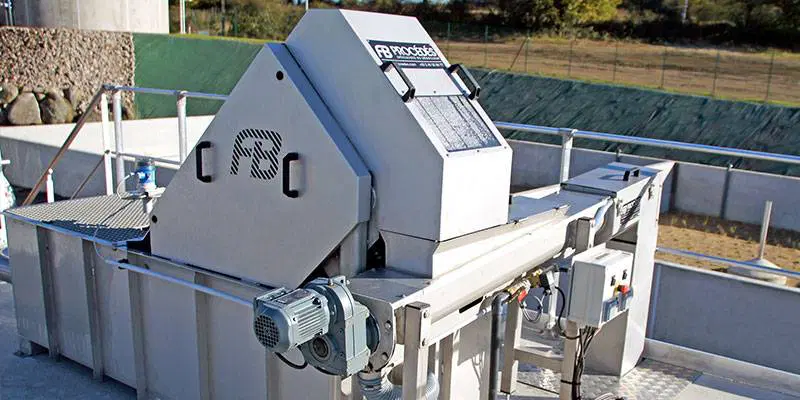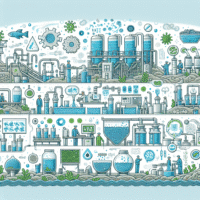Screening in Wastewater Treatment: Essential Processes and Technologies

In the sphere of wastewater treatment, screening serves as an indispensable preliminary step, aimed at sieving out debris and solids from the water. This process not only protects the equipment further down the treatment line from potential damage but also assists in the overall reduction of downstream processing challenges and improves the effectiveness of subsequent treatment phases. Screening selections are guided by factors such as wastewater characteristics, environmental considerations, and regulatory requirements, forming a crucial facet in the design and operation of water treatment plants.
Mechanical screens, which include rotary drums and vortex-type systems, are frequently chosen for their efficiency in handling large volumes of wastewater. They facilitate the removal of a varied spectrum of materials, from leaves and paper to heavier grit and sediments, with their operational complexity and costs varying accordingly. Manual and static screening options also exist, providing simpler and more cost-effective solutions where appropriate. Advances in screening technology continue to optimize the efficiency of this process, highlighting the importance of routine maintenance and innovative design to ensure the longevity and reliability of these systems.
Key Takeaways
- Screening is a critical first step in wastewater treatment to remove solids and protect downstream processes.
- A variety of screening options, including mechanical and manual methods, cater to different treatment needs and capacities.
- Technological advancements and proper maintenance are vital for the efficient operation of screening systems in water treatment plants.
Fundamentals of Screening in Wastewater Treatment
Screening is an essential first step in the wastewater treatment process, designed to protect the subsequent stages from damage and inefficiency. It involves the removal of large particles and debris which can cause blockages and wear.
Purpose of Screening
The primary purpose of screening is to safeguard the operation of wastewater treatment facilities. By removing larger solids from the flow, screens protect pumps, pipes, and other mechanical components from damage and clogs. The design of screens in wastewater treatment takes into account factors like flow rate, load, and the types of solids anticipated.
Types of Screens
- Coarse Screens: These are used to remove bulky solids and are characterized by larger openings. Coarse screens are typically the first line of defense in the screening process.
- Fine Screens: After the coarse screening, fine screens come into play to eliminate smaller particulates. These screens have much smaller openings and capture debris that the coarse screens may miss.
The selection between coarse and fine screens is contingent upon the specific treatment needs and the desired quality of effluent. However, both forms of screens are critical in their roles for efficient and effective wastewater treatment operations.
Mechanical Screening Equipment
Mechanical screening serves a critical function in wastewater treatment plants by removing solids that could damage equipment downstream. Specific types of screens are designed to meet various levels of screening needs.
Bar Screens
Bar screens are typically the first line of defense in the screening process. These screens are composed of parallel bars set at a specific spacing to catch large debris. The spacing between the bars varies depending on the application, but it is crucial for the effective removal of bulky solids. They can be manually or mechanically cleaned, with mechanical bar screens being more common in modern facilities due to their ability to automatically remove accumulated waste.
Drum and Rotary Screens
Rotary drum screens serve to remove fine to medium-sized solids from wastewater. As wastewater enters the rotary drum screen, it flows through a rotating cylinder, and particles are caught on the inner surface of the drum. These screens are known for their high efficiency and are particularly effective when used in combination with fine screens, enhancing the overall quality of the effluent.
Band and Climber Screens
Band screens are notable for their continuous cleaning ability and high removal efficiencies, which make them well-suited for high-flow applications. Solid waste is removed from the wastewater by a series of rotating bands that carry the debris upwards and away from the flow. Climber screens operate on a similar principle, using a roving rake which is moved by a chain to lift debris from the effluent. These screens are recognized for both their proficiency in waste removal and their adaptability to various plant sizes and flow conditions.
Manual and Static Screening Options
Manual and static screening are essential methods employed in wastewater treatment to efficiently remove debris and reduce the potential for clogging in downstream processes. These methods are characterized by their effectiveness and straightforward operation.
Basket and Microscreens
Basket screens are typically utilized in manual screening where larger debris such as rags and bottles are caught. The primary advantage of a basket screen in wastewater treatment lies in its simplicity and the ease with which it can be manually cleaned. Microscreens, on the other hand, are fine screens that capture smaller particles. They are often used in applications where a higher level of filtration is necessary. These screens function by allowing wastewater to pass through a fine mesh, often made of stainless steel or synthetic fabric.
Parabolic and Static Screens
Parabolic screens, also known as bend screens or side hill screens, use the force of gravity to separate solids from liquids. Wastewater flows over the curved surface of the screen, with solids being captured and liquids passing through. They require minimal maintenance, making them a cost-effective option for many treatment plants. Static screens operate without moving parts. The wastewater flows through the screen which is usually inclined, to enhance solid-liquid separation based on size exclusion. Static screens are praised for their robustness and dependability in various waste stream conditions.
Screening System Design Considerations
In designing a screening system for wastewater treatment, careful consideration must be taken concerning the selection of screens, the expected hydraulic and organic loadings, and the ongoing maintenance and operation of the system. These core aspects are critical for the effective performance of the treatment plant.
Screen Selection Criteria
The design of the screen in wastewater treatment plants is a foundational element that dictates the effectiveness of the entire screening process. Screens are chosen based on wastewater characteristics and treatment goals. Perforated screens are often selected for their mechanical simplicity and effectiveness in removing solids. Key criteria for screen selection include:
- Opening size: To capture the appropriate types of debris and particulate matter.
- Material: Durable materials that resist corrosion and wear.
- Cleaning mechanisms: Consideration for manual or automated cleaning features.
Hydraulic and Organic Loadings
An understanding of hydraulic and organic loadings is vital for ensuring that the screening system can cope with the volume and composition of the incoming wastewater. Design considerations include:
- Peak flow rate: To determine the capacity requirements of the screens.
- Load variations: Screens must accommodate daily and seasonal fluctuations.
- Organic load: The amount of organic matter present in the wastewater can influence screen type and cleaning frequency.
Screen Maintenance and Operation
Effective maintenance and operation are fundamental to the longevity and reliability of the screening system. Strategic design features can facilitate these aspects:
- Accessibility: Screens should be easily accessible for maintenance.
- Reliability: Robust design to minimize breakdowns and maintenance requirements.
- Operator safety: Safe operational protocols and structures to protect staff.
By meticulously addressing these aspects of screen system design, engineers can ensure that the wastewater treatment process begins with the best possible preparation of the influent for subsequent treatment stages.
Advanced Screening Technologies
In the realm of wastewater treatment, advanced screening technologies are integral for removing fine particulates and protecting downstream processes. They enhance the effectiveness of the wastewater treatment by capturing smaller particles that conventional screens miss.
Fine and Microscreen Technologies
Fine screens are characterized by their ability to remove particles that are smaller than those captured by coarse screens. Typically, these screens have openings ranging from 6 to 25 millimeters. They are designed to operate continuously and require minimal oversight, making them a cost-efficient screening solution. Microscreens, on the other hand, provide even finer filtration, with openings less than 2 millimeters. They are particularly effective for the removal of algae, small debris, and other micro-particles from wastewater, contributing to a higher level of purification before further treatment stages.
- Fine Screens:
- Opening size: 6-25 mm
- Continuous operation
- Microscreens:
- Opening size: <2 mm
- Effective for algae and small debris removal
Step and Automated Screens
Step screens represent a dynamic class of screening technologies. These systems comprise a series of steps that act as a filter and transport solids upwards out of the wastewater stream. They are highly automated and can adjust to changes in flow and solid loading without human intervention, showcasing their adaptability to treatment plant needs.
- Step Screens:
- Automated adjustment to flow changes
- Efficient solid-liquid separation
Automated screens, including step screens, have transformed wastewater screening by providing sophisticated mechanisms that require less manual cleaning and maintenance. These technologies are instrumental in reducing labor costs and downtime in wastewater treatment facilities.
- Automated Screens:
- Reduced manual intervention
- Lower labor costs and maintenance
Screenings Handling and Disposal
In wastewater treatment, screenings are materials such as rags, paper, plastics, and metals removed from the liquid flow to prevent damage and obstruction in downstream equipment. Proper management of screenings includes conveyance as well as treatment and disposal, which are essential for maintaining a hygienic and efficient operation in a wastewater treatment plant.
Screenings Conveyance
Conveyance systems transport screenings from the screening equipment to a place where they can be processed or disposed of. These systems typically include screw conveyors or wash presses. The design of the conveyance system directly impacts the ease of handling and the subsequent treatment or disposal process, as they need to handle materials of different sizes and moisture content efficiently.
Waste Screenings Treatment and Disposal
Once conveyed, waste screenings undergo treatment to reduce odor, volume, and organic content. They may be washed to recover organic materials and then compacted to reduce volume. The final disposal of screenings may involve landfilling, incineration, or, where regulations and facilities permit, use as raw material in certain industrial processes. Treatment and disposal methods depend upon local environmental guidelines, with sustainability and pollution prevention playing crucial roles in the decision-making process.
- Landfilling: Screenings are often disposed of in landfills. Due to potential environmental impacts, they may be treated to reduce organics before landfilling.
- Incineration: This method reduces the volume of screenings and can generate energy, but it requires high capital and operational investments.
- Recycling/Reuse: Depending on their composition, screenings can sometimes be recycled or reused, contributing to the circular economy within the community infrastructure.
Each disposal route for screenings from a wastewater treatment plant is chosen based on environmental impact, cost, and local regulations to ensure the best outcome for public health and the environment.
Screening Operation and Maintenance
In the context of wastewater treatment, screening is a crucial first step, designed to protect the processing equipment from damage and remove objects that could hinder treatment efficiency. The effectiveness of this stage relies heavily on diligent operation and maintenance practices.
Routine Inspection Protocols
Routine inspections are a cornerstone of successful screening operations. Personnel must conduct daily checks to ensure screens are free from obstructions and operational faults. In the design of screens in wastewater treatment plants, consideration is given to both manual and automatic systems. Manual screens require more frequent inspections as they depend on direct human intervention to clear debris, while mechanical screens may have automated cleaning systems but still need regular monitoring to ensure they are functioning correctly.
Key aspects of routine inspection include:
- Visual Checks: Monitoring for any visible signs of wear and tear or accumulation of materials.
- Mechanical Integrity: Ensuring that moving parts such as rakes, brushes, or belts function without hindrance.
- Cleaning Efficacy: Verifying that the screen surface is clean and clear of all debris after each cycle.
Troubleshooting and Maintenance Strategies
When it comes to maintaining screening equipment in a wastewater treatment plant, a proactive approach goes a long way in preventing unscheduled downtimes. Maintenance strategies must be well-documented and followed rigorously.
Important maintenance actions include:
- Timely Repairs: Addressing any mechanical issues immediately to prevent further damage or inefficiencies.
- Replacement of Parts: Keeping an inventory of essential parts for quick replacement when wear is detected.
- Periodic Overhauls: Dismantling and inspecting screens periodically for in-depth cleaning and to replace worn components that might not be evident during routine inspections.
Adherence to these strategies ensures that screening equipment remains reliable, safeguarding the functionality of a wastewater treatment plant.
Environmental and Regulatory Impacts
The process of screening in wastewater treatment plants is critical for protecting water quality and complying with environmental regulations. It serves as a frontline defense against solid wastes entering treatment systems.
Environmental Considerations
Screening is essential in wastewater treatment plants to prevent large solids from disrupting the treatment processes. Environmental benefits of effective screening include:
- Protection of Aquatic Life: By removing large particulates, screening helps safeguard aquatic ecosystems from harmful waste.
- Prevention of Eutrophication: Efficient screening limits the amount of organic matter entering water bodies, which in turn reduces the risk of eutrophication resulting from excess nutrients.
Table 1: Environmental Benefits of Screening
| Benefit | Description |
|---|---|
| Aquatic Life Protection | Screening out solids minimizes harm to organisms living in water bodies. |
| Eutrophication Prevention | Reduces nutrient loads that contribute to harmful algal blooms. |
Regulatory Compliance and Standards
Wastewater treatment plants must comply with stringent regulatory standards to ensure environmental protection:
- Clean Water Act: Facilities must meet requirements set by the Clean Water State Revolving Fund (CWSRF) for water quality infrastructure projects.
- Resource Conservation and Recovery Act: The Resource Conservation and Recovery Act (RCRA) impacts how facilities manage waste, including the initial screening phase.
Table 2: Regulatory Standards Relevant to Screening
| Regulation Impact | t on Screening |
|---|---|
| Clean Water Act enforces | s the removal of debris to meet effluent water quality criteria. |
| Resource Conservation and Recovery Act | Governs waste management practices, including preliminary waste separation. |
Frequently Asked Questions
What are the different types of screens used in wastewater treatment plants?
In wastewater treatment plants, several types of screens are employed, which include bar screens, drum screens, disc screens, and step screens. Each type is designed to intercept different sizes and types of solids from the wastewater stream.
How does screening differ from filtering in the context of water treatment processes?
Screening involves the removal of large solids and debris from the wastewater stream, typically at the beginning of the treatment process. Filtering, on the other hand, is a finer process that separates smaller particles later in the treatment cycle, often after the initial larger solids have been screened out.
What role does screening play in the overall wastewater treatment process?
Screening plays a protective role in the overall wastewater treatment process by removing large solid wastes early on. This prevents damage to pumps and other equipment in subsequent stages and reduces the burden on the finer treatment processes that follow.
Can you explain the design considerations for an effective screening system in wastewater treatment?
An effective screening system in wastewater treatment is designed based on several considerations, including the characterization of the influent, flow rates, desired removal efficiencies, and the ease of screen cleaning and maintenance. The system must be robust enough to handle varying loads and conditions.
What are the major stages of water treatment that include screening and how do they function?
The major stages of water treatment that include screening are the preliminary and primary stages. Preliminary screening removes large debris, while primary screening typically involves settling processes where finer screens may be used to remove smaller particles.
What are the distinctions between screening, straining, and pumping within sewage treatment workflows?
Screening separates large debris based on size as wastewater flows through screens; straining removes particles that are smaller than those typically captured by screens; and pumping refers to the actual movement of wastewater through the treatment system, which can occur at various stages of the process.



